
Fundamentals
The notion of ‘Overnight Protection’ for textured hair, particularly within the heritage of Black and mixed-race communities, extends far beyond a simple modern product or technique. At its most fundamental, this term designates the deliberate practices and rituals undertaken before sleep to safeguard the delicate structure of textured strands, preserve moisture, and maintain intricate styles. It speaks to a deep, intuitive understanding of hair’s unique vulnerabilities and the need for consistent, gentle care. This foundational comprehension recognizes that the hours of rest, often overlooked, present a critical period for both potential damage and profound restoration for hair that naturally possesses a more complex coil or curl pattern.
Historically, these nightly routines were not merely about aesthetics; they were integral to the longevity of labor-intensive hairstyles and the overall well-being of the individual. In numerous African societies, hair held immense spiritual, social, and cultural significance, acting as a visual language that communicated a person’s identity, status, and beliefs. The care rituals associated with hair were therefore imbued with purpose, extending to its preservation during periods of rest. This foundational meaning of ‘Overnight Protection’ is thus rooted in ancestral wisdom, recognizing the importance of conscious, nightly preservation to uphold the health and cultural integrity of hair.
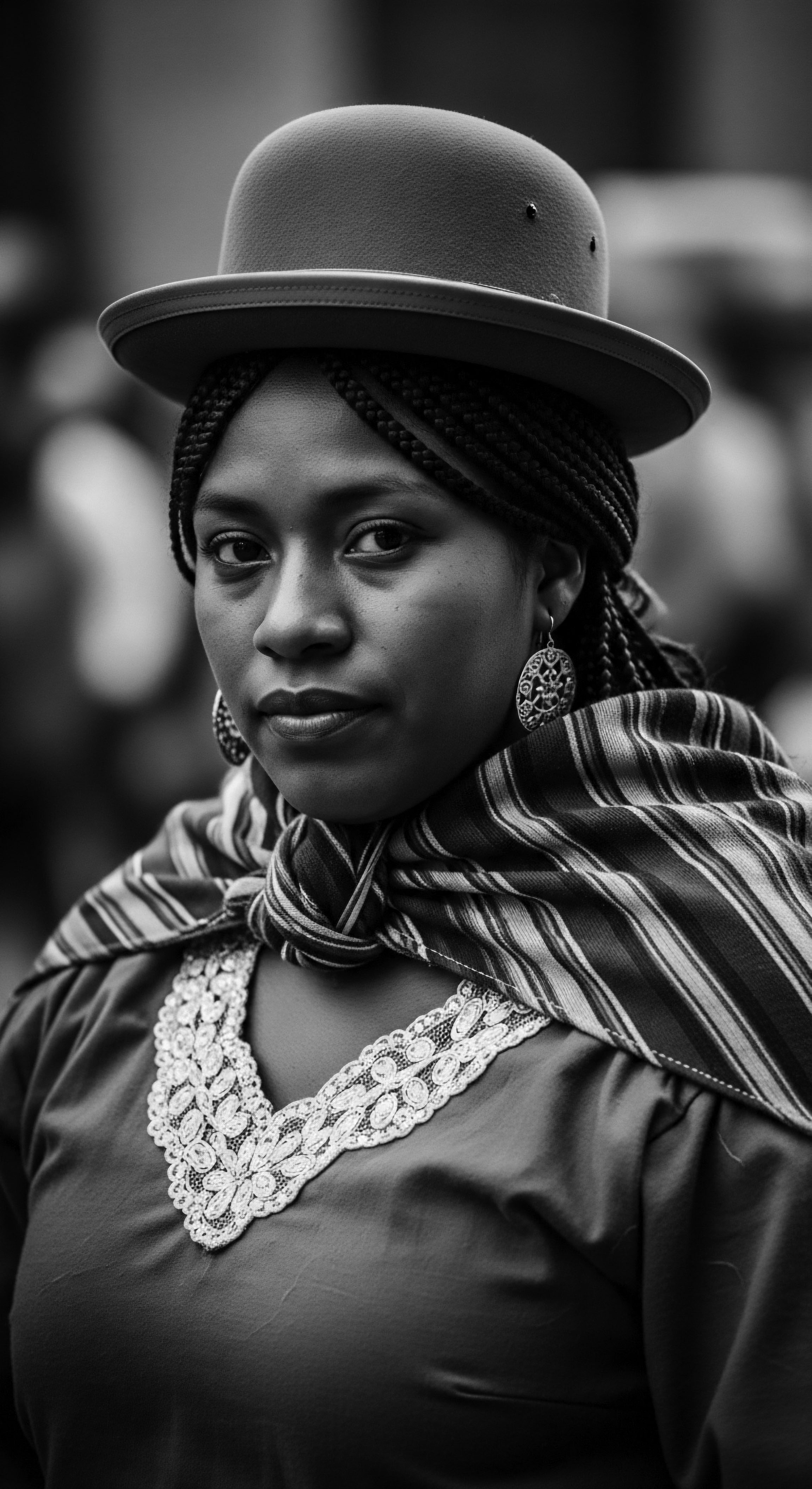
Ancestral Roots of Nightly Care
Across various African cultures, hair care was a communal activity, often a social opportunity to bond with family and friends. Intricate styles, such as braids, twists, and various forms of threading, could take hours or even days to create and were designed to last for extended periods. Preserving these styles, and by extension, the hair’s health, became a nightly imperative. The practices involved were intuitive and deeply connected to available natural resources and cultural knowledge.
- Headwraps ❉ These versatile cloths served multiple purposes, including protection from environmental elements during the day and safeguarding hair while sleeping. They reduced friction against rough sleeping surfaces, helping to maintain moisture and prevent tangling. In many African societies, the specific wrapping style could even indicate a person’s marital status or social position.
- Braiding and Twisting ❉ Before the advent of modern hair tools, braiding and twisting were primary methods for securing hair. These styles, often worn during the day, were also ideal for overnight preservation. They minimized knots, reduced tension on individual strands, and kept hair neatly contained, preventing damage from tossing and turning.
- Natural Oils and Butters ❉ Ancestral communities used indigenous plant-based oils and butters, such as shea butter and various botanical extracts, to moisturize and seal the hair. Applying these emollients before sleep provided a protective barrier, preventing moisture loss and enhancing hair’s suppleness.
Overnight Protection, at its core, is an ancient dialogue between textured hair and the wisdom of its caretakers, ensuring vitality through deliberate nightly rituals.
The very concept of ‘Overnight Protection’ is therefore not a recent innovation but a continuation of deeply ingrained ancestral practices. It speaks to a heritage of meticulous care, where every aspect of hair’s existence, including its vulnerability during sleep, was considered and addressed with thoughtful attention. The knowledge passed down through generations about safeguarding hair during rest laid the groundwork for contemporary understandings and practices.
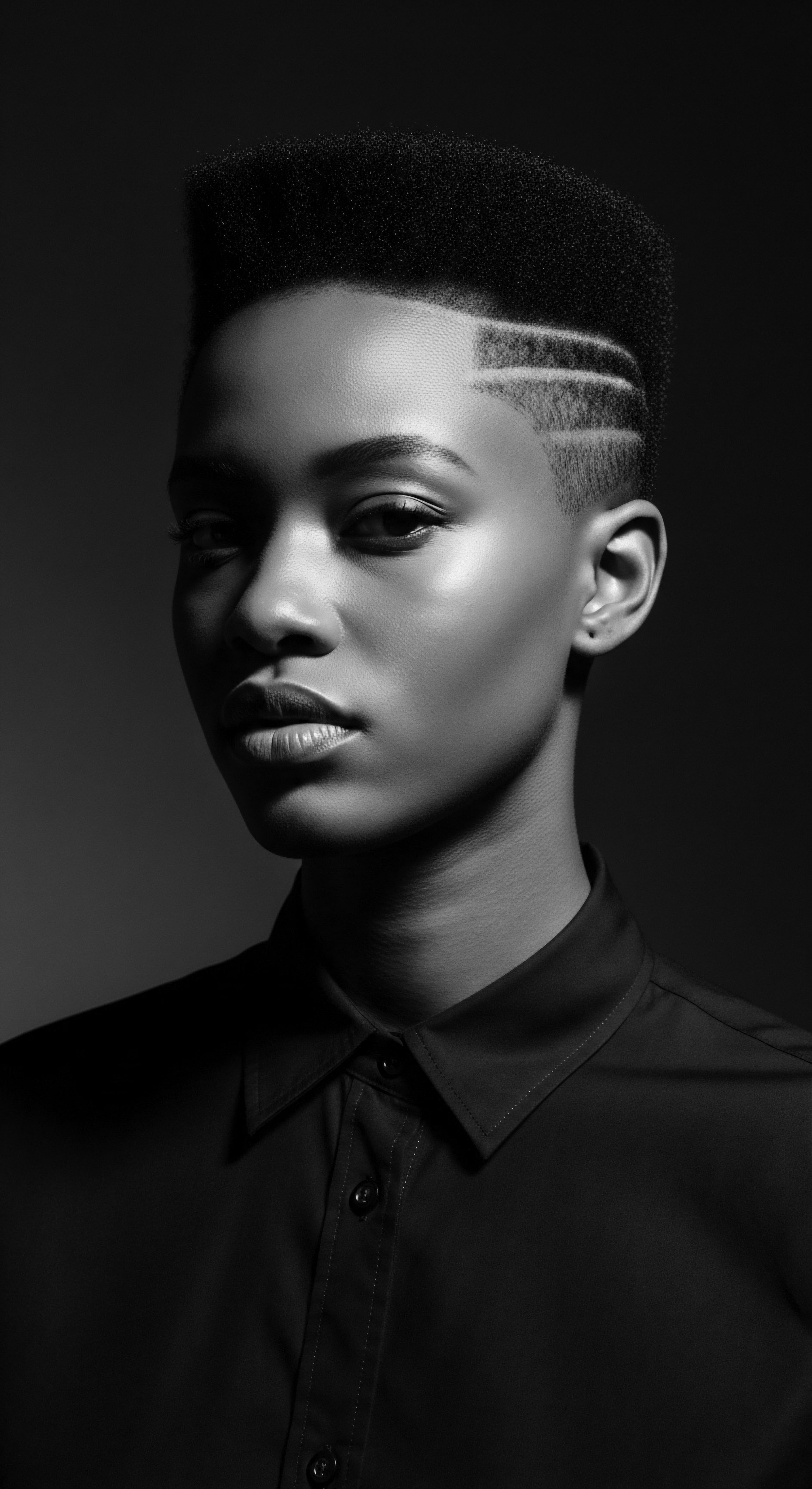
Intermediate
Moving beyond the foundational understanding, ‘Overnight Protection’ assumes a more nuanced meaning for those familiar with textured hair care, particularly in the context of its cultural journey across the diaspora. It is not simply about covering the hair, but about creating an optimal micro-environment that minimizes friction, preserves moisture, and maintains style integrity throughout the nocturnal hours. This advanced appreciation recognizes the delicate nature of textured hair, which is inherently more prone to dryness and breakage due to its unique elliptical cross-section and the challenge of natural oils migrating down the coiled shaft.
The significance of ‘Overnight Protection’ here extends to preserving the labor of styling, which often requires considerable time and effort for textured hair. It also speaks to a conscious act of self-care, a quiet rebellion against historical pressures to conform to Eurocentric beauty standards. By actively protecting one’s hair overnight, individuals assert agency over their hair’s health and appearance, honoring its natural state and the heritage it carries.

The Science of Nighttime Preservation
From a scientific standpoint, the hours of sleep present several challenges for textured hair. Friction from cotton pillowcases can strip hair of its natural moisture, leading to dryness, frizz, and breakage. The mechanical stress of tossing and turning can disrupt curl patterns, cause tangles, and create knots. ‘Overnight Protection’ aims to counteract these forces by providing a smooth, low-friction surface and securing the hair in a way that preserves its structure.
Modern practices often validate the wisdom of ancestral methods, offering scientific explanations for their efficacy. For instance, the use of silk or satin materials for bonnets, scarves, or pillowcases reduces friction significantly compared to cotton, allowing hair to glide rather than snag, thus retaining moisture and minimizing damage. Similarly, protective styles like braids, twists, or buns, which have deep roots in African traditions, serve to tuck away delicate ends, reducing exposure to environmental stressors and mechanical wear.
| Historical/Ancestral Practice Headwraps of various fabrics (e.g. cotton, plant fibers) |
| Contemporary Scientific Rationale Reduced friction against rough sleeping surfaces; contained hair. |
| Historical/Ancestral Practice Intricate braiding and twisting patterns |
| Contemporary Scientific Rationale Minimized tangling and mechanical stress; preserved style. |
| Historical/Ancestral Practice Application of natural oils and butters (e.g. shea, coconut) |
| Contemporary Scientific Rationale Provided a protective moisture barrier; sealed the cuticle. |
| Historical/Ancestral Practice Sleeping on softer natural materials (e.g. animal skins, finely woven mats) |
| Contemporary Scientific Rationale Offered a smoother surface than rough ground, lessening friction. |
| Historical/Ancestral Practice The enduring wisdom of ancestral practices for hair preservation finds affirmation in contemporary scientific understanding. |

Cultural Adaptations and Evolution
As people of African descent were forcibly dispersed across the globe, the practices of ‘Overnight Protection’ adapted to new environments and circumstances, yet their core purpose remained. In the Caribbean, for instance, headwraps continued to be a symbol of identity and resistance, simultaneously serving the practical purpose of protecting hair from the elements and during rest. The continuity of these practices speaks to their profound utility and the resilience of cultural knowledge.
The understanding of ‘Overnight Protection’ also encompasses the selection of appropriate products. While ancestral communities relied on naturally occurring emollients, modern hair care offers a wider array of conditioners, leave-ins, and styling creams designed to hydrate and shield hair. The discernment in choosing these products, often prioritizing those that honor the hair’s natural texture and moisture needs, represents a contemporary expression of ancestral care principles.
Overnight Protection is a practice born of necessity and wisdom, adapting through generations to safeguard textured hair’s innate beauty and resilience.
This intermediate perspective acknowledges that ‘Overnight Protection’ is not a static concept. It is a living tradition, continually shaped by scientific discoveries, product innovations, and the ongoing cultural dialogue within Black and mixed-race communities. Its meaning is deepened by the awareness of its historical roots and its ongoing relevance in preserving hair health and celebrating textured hair heritage.
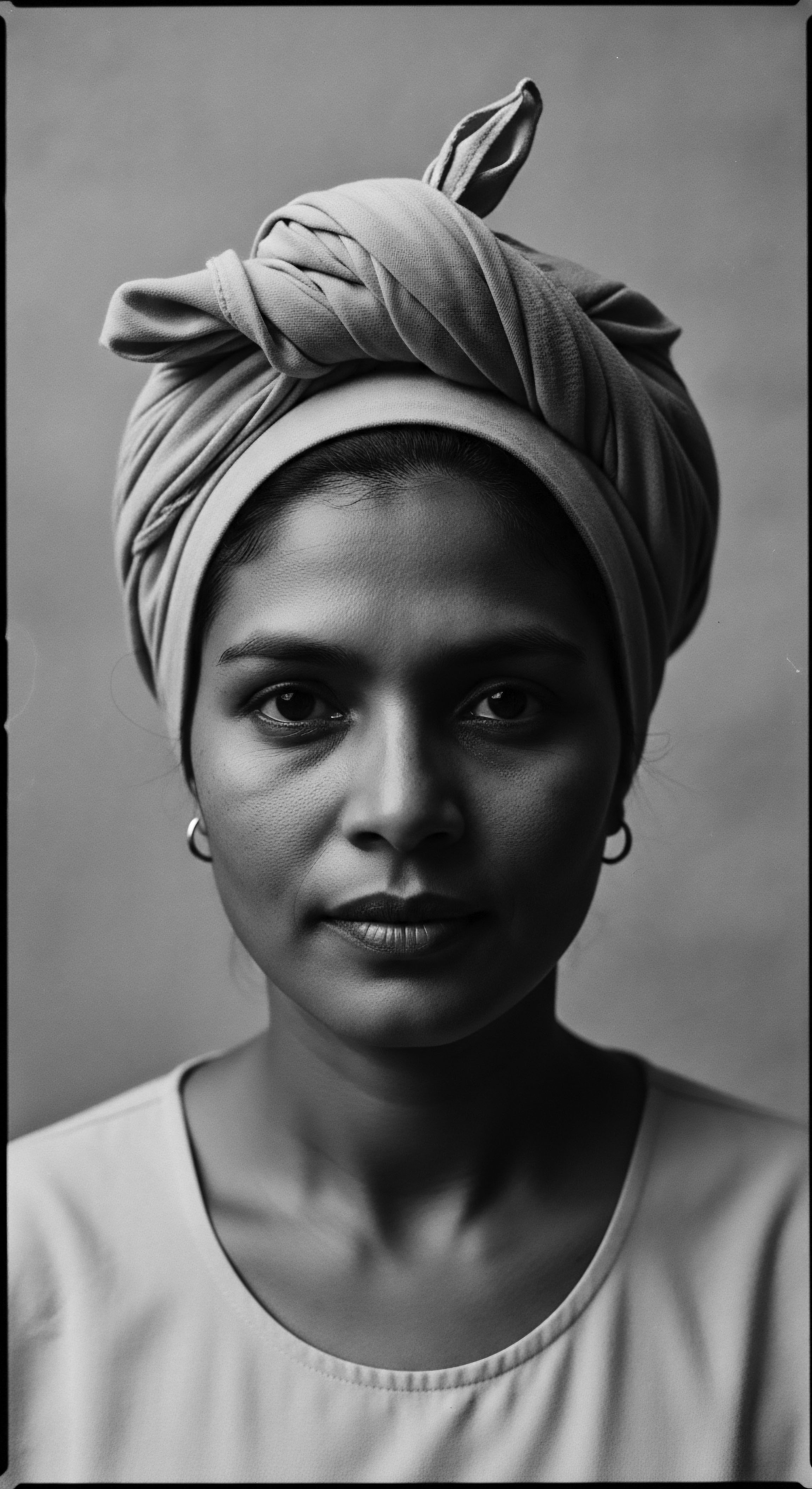
Academic
The academic definition and meaning of ‘Overnight Protection’ for textured hair, particularly within the diasporic African context, delineates a complex interplay of biophysical necessity, cultural preservation, and socio-historical resistance. It is not merely a utilitarian act of safeguarding hair from mechanical stress during sleep, but a deeply embedded practice that articulates agency, self-determination, and the enduring legacy of ancestral knowledge in the face of systemic challenges. This practice, therefore, extends beyond the individual, acting as a micro-level manifestation of macro-level cultural continuity and resilience.
From an academic lens, ‘Overnight Protection’ signifies a deliberate intervention in the hair’s diurnal cycle, optimizing its nocturnal restorative phase while mitigating external stressors. The unique morphology of highly coiled or kinky hair, characterized by an elliptical cross-section and fewer cuticle layers at the curve’s apex, renders it particularly susceptible to desiccation and fracture from friction. The practices subsumed under ‘Overnight Protection’ — such as strategic wrapping, specialized textiles, and the application of emollient compounds — serve to minimize water vapor transmission from the hair shaft, reduce abrasive forces against bedding materials, and maintain the integrity of complex, often time-consuming, protective hairstyles.

Echoes from the Source ❉ Biophysical Imperatives and Ancient Ingenuity
The biological imperative for ‘Overnight Protection’ arises from the inherent structural characteristics of textured hair. Unlike straight hair, which allows natural sebum to distribute evenly along the shaft, the helical nature of coiled hair impedes this process, contributing to chronic dryness. This dryness, coupled with the hair’s natural fragility at points of curvature, predisposes it to breakage, particularly during the unrestrained movements of sleep.
Ancestral communities, without the benefit of modern microscopy, intuitively understood this vulnerability. Their solutions, rooted in empirical observation and intergenerational knowledge transfer, prefigured contemporary trichological principles.
For instance, the widespread use of natural oils and butters in pre-colonial African societies, such as shea butter, palm oil, and various seed oils, served as occlusive agents, forming a lipid barrier that slowed evaporative water loss from the hair and scalp. This application before sleep was a pragmatic approach to sustain moisture, a practice that resonates with modern understanding of lipid-based conditioners and sealants. Similarly, the meticulous art of braiding, twisting, and knotting hair, often taking hours to complete, functioned as a physical ‘cage’ for the delicate strands, preventing tangling and minimizing exposure to damaging friction against sleeping surfaces. These practices were not merely aesthetic expressions; they were sophisticated, albeit uncodified, forms of preventative hair medicine.
The academic meaning of Overnight Protection uncovers a profound historical truth ❉ ancestral practices were often sophisticated biophysical interventions, designed for the unique needs of textured hair.

The Tender Thread ❉ Living Traditions and Community Wellness
The meaning of ‘Overnight Protection’ transcends its purely technical definition when viewed through the lens of cultural anthropology and the lived experiences of Black and mixed-race individuals. It represents a continuous thread of care, passed down through matriarchal lines, symbolizing continuity, resilience, and identity. In many African societies, hair care rituals were deeply communal, fostering bonds and transmitting cultural values. This communal aspect persisted even through the transatlantic slave trade, where hair practices became covert forms of resistance and communication.
A powerful historical example that profoundly illuminates ‘Overnight Protection’s’ connection to textured hair heritage and Black experiences is the strategic use of cornrows during the era of enslavement in the Americas. While primarily a daytime style, the very act of creating and maintaining these intricate patterns, often performed at night or during brief respites, served multiple functions that extended to a form of protection. Enslaved African women, stripped of their cultural markers and subjected to dehumanizing conditions, utilized cornrows not only to manage their hair in harsh environments but also as a means of communication and survival. Historical accounts and oral traditions suggest that patterns in cornrows were sometimes used as maps for escape routes, and remarkably, rice seeds were braided into the hair, serving as sustenance for journeys to freedom or as a means to cultivate food upon arrival in new, liberated territories.
This extraordinary practice of braiding sustenance into one’s hair before sleep, a form of ‘Overnight Protection’ in its most existential sense, underscores the ingenuity and resilience embedded within Black hair traditions. It was a practice born of necessity, a testament to the profound value placed on hair as a vessel for life, memory, and defiance. This historical reality highlights how hair care, including its nocturnal preservation, was inextricably linked to survival, cultural identity, and the aspiration for freedom.
This historical context transforms ‘Overnight Protection’ from a simple hair care routine into a profound cultural act. It underscores the concept’s deep roots in the collective memory of a people who, despite immense adversity, found ways to preserve their hair, their heritage, and their very lives through ingenuity and communal care. The quiet moments of nightly hair preparation thus become a continuation of this enduring legacy, a whispered conversation between generations.

Diasporic Adaptations and Identity Assertion
The journey of ‘Overnight Protection’ through the African diaspora reveals its dynamic nature. In Louisiana, the infamous Tignon Laws of the late 18th century, which compelled free women of color to cover their hair in public to denote their social status, ironically led to a re-appropriation of headwraps. These women transformed the imposed head covering into elaborate, fashionable statements, using luxurious fabrics and intricate tying methods that further asserted their identity and beauty.
While not exclusively ‘overnight’ practices, these headwraps often remained on during sleep to preserve styled hair, embodying a continuous thread of protection and self-expression. This historical instance demonstrates how ‘Overnight Protection’ became intertwined with broader acts of resistance and the reclamation of aesthetic autonomy.
The enduring presence of practices like head wrapping (with bonnets, scarves, or wraps) and protective styling (braids, twists) in contemporary Black and mixed-race communities serves as a direct lineage to these ancestral and diasporic experiences. A 2019 study by Dove, focusing on hair discrimination, reported that Black women are 3.4 times more likely to be labeled unprofessional due to hair presentation and 1.5 times more likely to be sent home citing “unprofessional hair.” This statistic, while not directly about ‘Overnight Protection,’ highlights the persistent societal pressures that make preserving natural hair texture and style, often through overnight methods, a necessity for many Black women. It underscores the cultural weight placed on hair and the continuous need for practices that maintain its health and appearance in a world that has historically devalued textured hair. The decision to protect one’s hair overnight, therefore, is not merely a cosmetic choice; it is an affirmation of identity, a rejection of imposed beauty norms, and a continuation of a heritage of self-preservation.
The act of preparing hair for sleep, whether through braiding, twisting, or covering, is a conscious investment in hair health and longevity. It is a moment of intimacy with one’s hair, a ritual that reinforces its value and connection to a rich lineage of care. This deep understanding positions ‘Overnight Protection’ as a cornerstone of textured hair wellness, intrinsically linked to its historical journey and cultural significance.
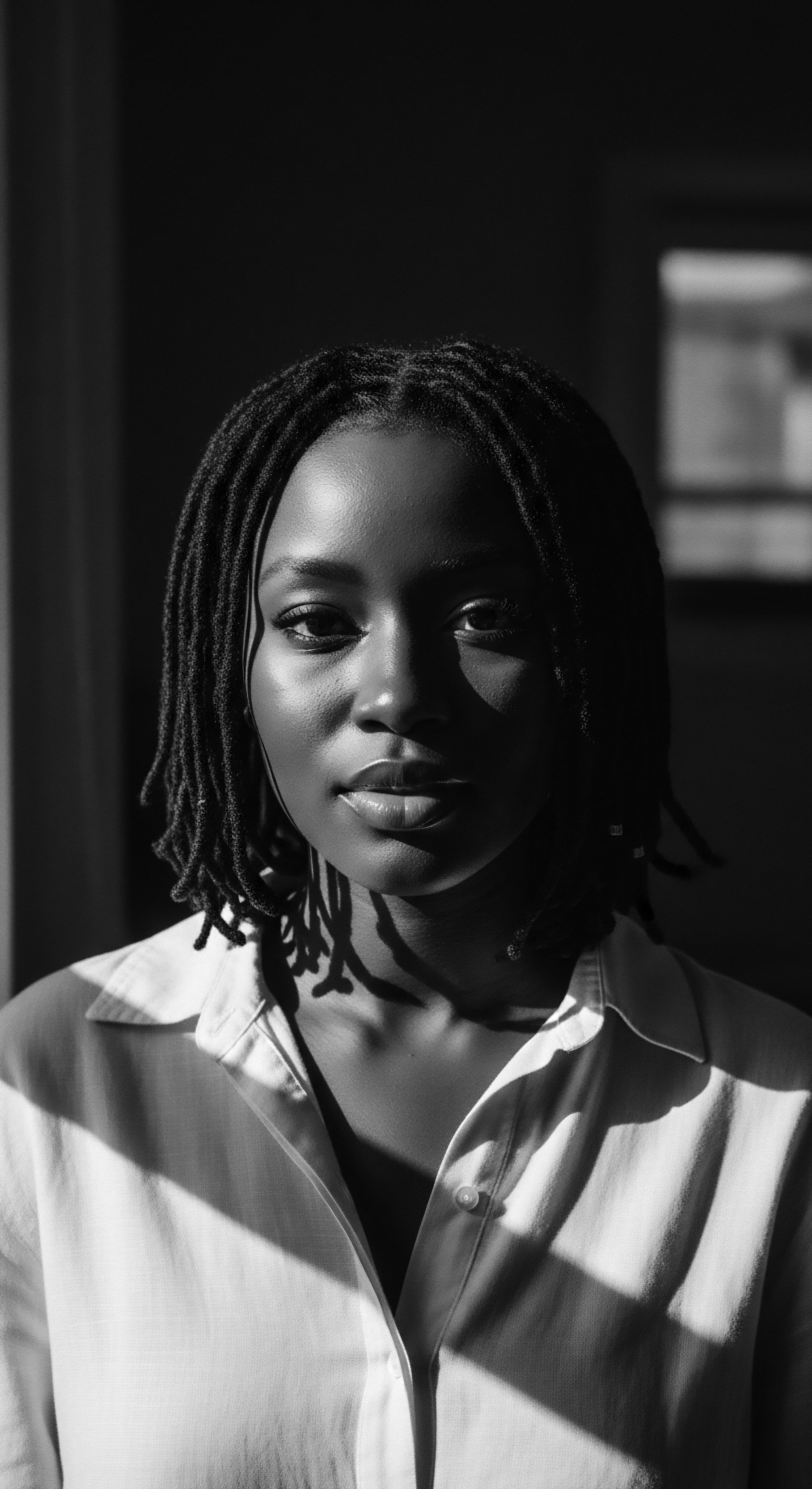
The Microcosm of Care ❉ Psychological and Social Dimensions
From a psychological perspective, the nightly ritual of ‘Overnight Protection’ contributes to a sense of control and self-efficacy. For individuals with textured hair, who have historically navigated societal pressures and discrimination related to their hair, these practices offer a space of agency and self-affirmation. The consistent act of caring for one’s hair, preparing it for rest, and waking to preserved styles can foster a positive relationship with one’s natural hair, contributing to overall self-esteem and cultural pride. This aligns with research indicating that Black hair and hair texture are psychologically significant and explicitly inform racial identity development.
Moreover, the sharing of ‘Overnight Protection’ techniques within families and communities serves as a form of cultural transmission. Mothers, aunts, and grandmothers pass down methods of braiding, wrapping, and oiling, along with the stories and wisdom associated with these practices. This intergenerational exchange reinforces familial bonds and strengthens collective identity, ensuring that the heritage of textured hair care continues to thrive. The practices become embodied knowledge, a silent language of care and connection that transcends words.
- Friction Reduction ❉ Sleeping on abrasive surfaces like cotton pillowcases can cause microscopic damage to the hair cuticle, leading to frizz, breakage, and moisture loss. Satin or silk bonnets and pillowcases create a smooth surface, allowing hair to glide without friction.
- Moisture Retention ❉ Textured hair is naturally prone to dryness. Covering the hair overnight, especially after applying moisturizing products, creates a humid microclimate that helps to seal in hydration, preventing the hair from drying out during sleep.
- Style Preservation ❉ Protective styles like braids, twists, or pineapple buns help to maintain a defined curl pattern and prevent tangling, reducing the need for excessive manipulation in the morning. This minimizes breakage and extends the life of a style.
- Scalp Health ❉ Some overnight practices, such as gentle scalp massages with nourishing oils, can promote circulation and distribute natural oils, contributing to a healthy scalp environment.
The concept of ‘Overnight Protection’ thus stands as a testament to human adaptability and the profound connection between cultural practices and personal well-being. It is a practice born of a deep understanding of hair’s elemental biology, refined through centuries of living traditions, and now understood through the clarifying lens of scientific inquiry. Its meaning is layered, reflecting the enduring strength and beauty of textured hair heritage.
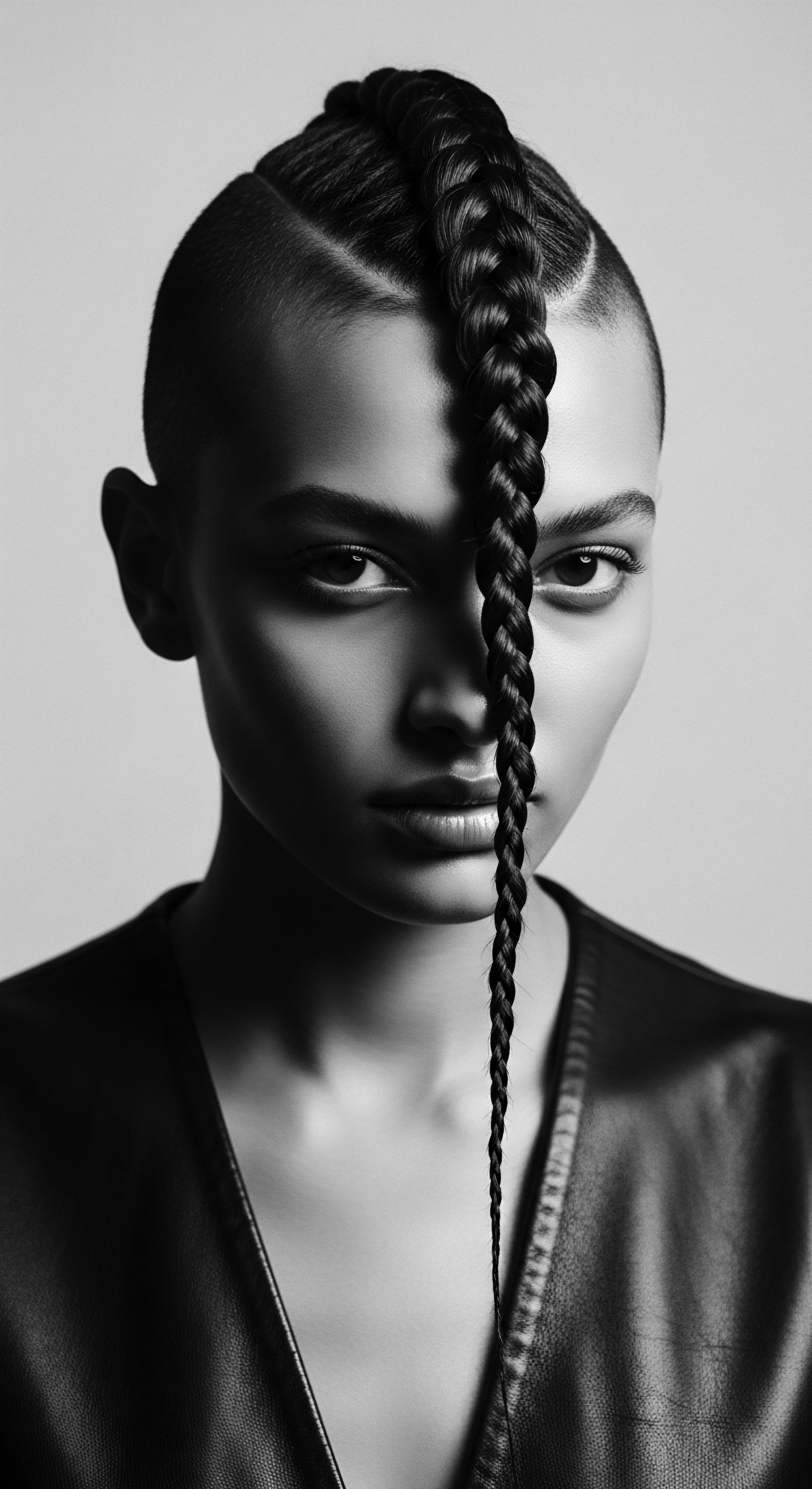
Reflection on the Heritage of Overnight Protection
As we draw this meditation on ‘Overnight Protection’ to its close, a profound truth emerges ❉ this practice is far more than a simple regimen for hair health. It is a living, breathing archive, a testament to the enduring ‘Soul of a Strand’ within the tapestry of textured hair heritage. From the ancient hearths of Africa, where meticulous braiding and sacred headwraps spoke volumes of status and spirit, to the harrowing journeys of the diaspora, where cornrows concealed pathways to freedom and seeds of new life, the act of safeguarding hair through the night has been a quiet, persistent act of cultural continuity. It is a whispered prayer for preservation, a defiant stand against erasure, and a tender embrace of self.
The echoes from the source resonate powerfully, reminding us that the seemingly modern concern for moisture and frizz is but a contemporary articulation of ancestral wisdom. The hands that once oiled coils with indigenous butters, or meticulously wrapped hair in vibrant cloths, were guided by an innate understanding of hair’s delicate needs, an understanding now affirmed by scientific inquiry. This unbroken lineage of care, stretching across continents and centuries, speaks to the resilience embedded within textured hair itself—a resilience mirrored in the communities that honor it.
‘Overnight Protection’ today remains a deeply personal ritual, yet it carries the weight of collective memory. Each silk bonnet donned, each braid meticulously formed, each application of nourishing balm, connects the individual to a vast network of ancestors who, too, understood the sacredness of their crowns. It is a practice that speaks to the power of small, consistent acts of care to sustain not only physical health but also spiritual well-being and cultural pride.
The unbound helix of textured hair, protected through the night, rises each morning as a symbol of an enduring legacy, ready to voice identity and shape futures, carrying the whispers of the past into the promise of tomorrow. This daily affirmation of heritage is a quiet revolution, a continuous celebration of what it means to carry the beauty and strength of a strand.
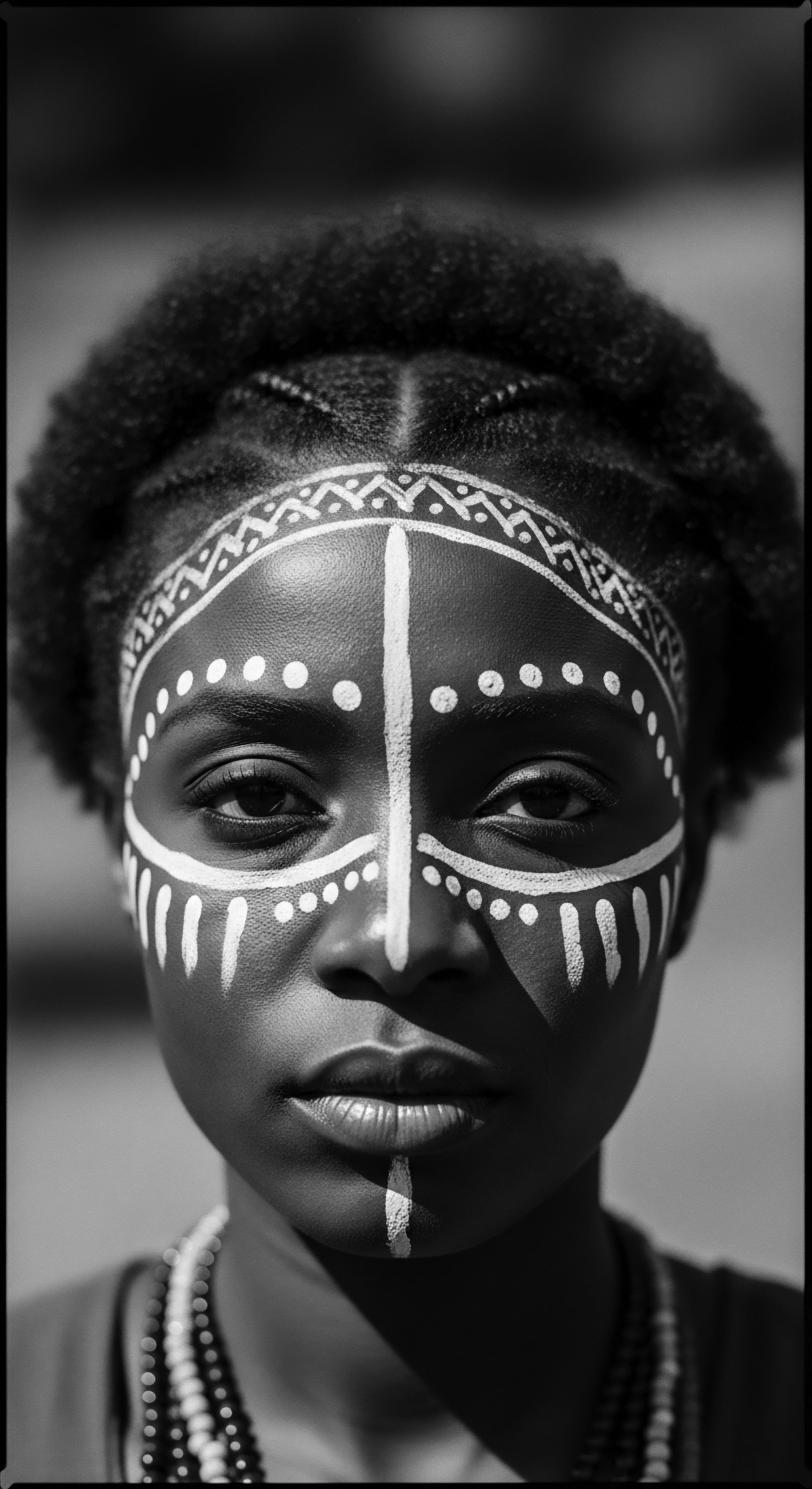
References
- Byrd, A. D. & Tharps, L. D. (2014). Hair Story ❉ Untangling the Roots of Black Hair in America. St. Martin’s Press.
- Carrington, A. (2017). Feminism and the Politics of Hair. Routledge.
- Dawson, G. A. Karl, K. A. & Peluchette, J. V. (2019). Hair matters ❉ Toward understanding natural black hair bias in the workplace. Journal of Leadership & Organizational Studies, 26(3), 389–401.
- Essel, O. Q. (2017). The Afrocentric Aesthetic in African Art and Culture. University Press of America.
- Mbilishaka, A. M. Clemons, M. Hudlin, T. Warner, C. & Jones, A. (2020). Black women’s hair discrimination ❉ An examination of experiences and consequences. Journal of Black Psychology, 46(6), 465-487.
- Mercer, K. (1994). Welcome to the Jungle ❉ New Positions in Cultural Studies. Routledge.
- Penniman, L. (2020). Farming While Black ❉ Soul Fire Farm’s Practical Guide to Liberation on the Land. Chelsea Green Publishing.
- Rifkin, H. (2012). Otjizumba ❉ The Art of Adornment among the Ovahimba. Ethnographic Museum of Namibia.
- Robinson, T. L. (2011). The role of hair in the identity development of Black women. Journal of Black Studies, 42(3), 437-456.
- Sieber, R. & Herreman, F. (2000). Hair in African Art and Culture. The Museum for African Art.
